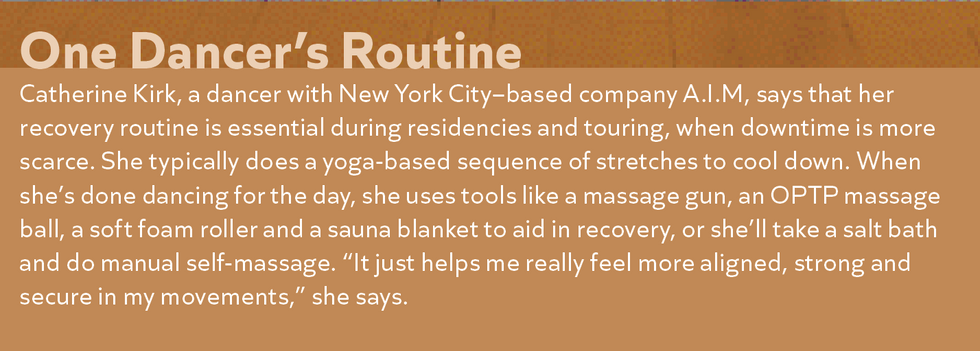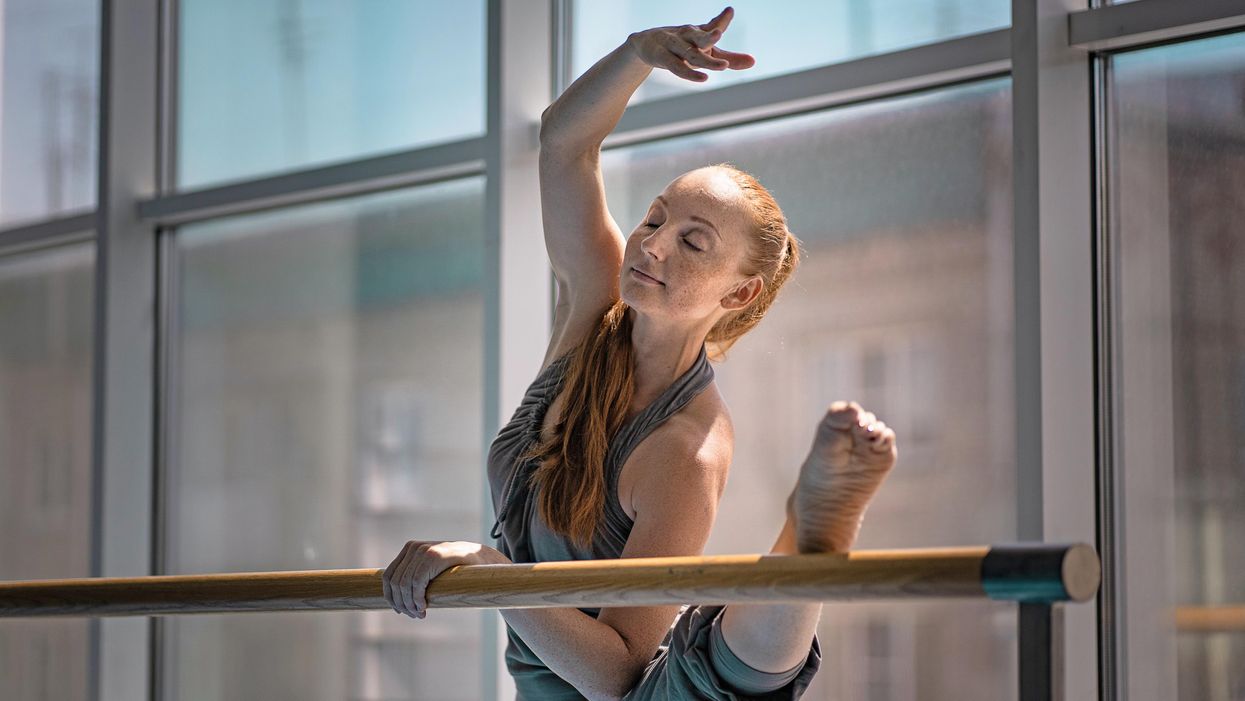Are Cooldowns Really Worth the Time?
The end of a class or rehearsal is typically when you do your most intense dancing, like a strenuous grand allégro or a full-out run of a piece. And most often, dancers simply rush along to their next commitment immediately afterwards. You’re lucky if you have a chance to catch your breath before you leave the studio.
While cooldowns are a staple in many fitness classes or cardio workouts, most dancers don’t devote much time (if any) to cooling their bodies down. But, in certain circumstances, experts say there can be benefits to picking up the habit.
Why Cool Down?
The point of a cooldown is to give your body time to come back to its normal baseline, says Kim Richards, a physical therapist and board-certified orthopaedic clinical specialist who works with dancers in Georgia. Dancing, like any type of exercise, increases the amount of blood that’s pumped throughout your body because your muscles need more oxygen during exertion. Letting your heart rate come down slowly gives your body time to transition back to its resting, balanced state, also known as homeostasis.
Your body naturally goes through this process no matter what you do after exercise. But an active cooldown potentially leads to faster recovery of the cardiovascular system, less muscle soreness and a more rapid reduction of lactic acid, the byproduct that builds up in your muscles during intense exercise, says Lauren McIntyre, a certified athletic trainer and clinical specialist at NYU Langone Health’s Harkness Center for Dance Injuries.
But there’s a catch: While there are immediate physiological processes that take place during a cooldown, there’s not a ton of research that points to long-term benefits, such as injury prevention and performance enhancement. “The research is very inconclusive about whether cooldowns actually are beneficial from a performance standpoint,” McIntyre says. Having a tool kit of restorative habits—including good hydration, sleep and cross-training—does far more for preventing injuries and optimizing performance.

When to Do It
There are certain instances when a cooldown would be especially helpful, such as after cardio exercise or dancing intensively for a prolonged time, Richards says. When your heart is really pounding, it’s beneficial to give your body time to gradually return to normal rather than just dropping to the floor. Abruptly stopping intense activity can lead to lightheadedness, dizziness and, in some cases, fainting.
For some dancers, the cooldown is more of a mental necessity. After a performance, for example, it can feel like “you’ve had this high and then suddenly you crash and you feel sad,” says Dr. Lucie Clements, a psychologist in West Sussex, England, who works with dancers and performing artists. Giving yourself time to come down from the adrenaline rush will help prevent what she refers to as “performance blues.”
If You’re Short on Time
Cooldowns don’t need to be elaborate. McIntyre suggests doing movement-based activities that are low-intensity, so you can keep your blood flowing without getting fatigued. “In general, the recommendation is to keep it short, less than 30 minutes,” McIntyre says. “It’s not a second workout; it should be something that feels good and comfortable to you.”
For example, walk around the studio as your breathing returns to normal, and take deep breaths in through your nose and out through your mouth. Dynamic stretching, such as moving through a yoga flow or doing walking lunges, can serve as a cooldown if you need to stay somewhat warm for the rest of your day. “There’s some research that suggests that if you have very intense activities separated by less than an hour, that’s a time when an active recovery would be beneficial,” McIntyre says.
And if you’re working on improving your flexibility, use the time to stretch. “We know that to achieve increases in range of motion with static stretching, you need to be warm,” McIntyre says. Many dancers spend time stretching during extensive warm-ups, but you’ll get far more out of it during a cooldown.
The Mental Approach
Clements suggests adding these mental strategies to your cooldown routine so you can feel relaxed and recharged after dancing.
Reframe your thinking:
Humans are hardwired to cling to the negative aspects of feedback, and have trouble retaining the positives. Intentionally recall what went well, and reframe anything that you might perceive as negative into something that’s effective and helpful. For example, instead of thinking “I couldn’t land any of my turns,” consider “I’m ready to work hard to land my turns next time.”
Talk to other dancers:
If you find yourself in a post-performance slump, it’s easy to “walk off and be in your own bubble,” Clements says. Instead, talk with another cast member about what you’re feeling and how the show went. “Reflect on what you achieved collectively as a company,” she says. And if it’s not possible to do a group reflection, journaling can help you bring your energy down from the high of performance, she says.
Stay present:
Ruminating on your dancing after you leave the studio won’t help you cool down—if anything, a spike in stress could interrupt the process, Clements says. During your commute, take some time to transition out of dancer mode and “reconnect to the present,” she says. “Think about what you need to do next, and set intentions or goals.” It’s common to be in a blurry or hazy headspace after getting offstage, because your body is adapting to the rush of adrenaline and racing thoughts you might’ve had during a performance. “You want to enjoy those emotions,” she says, but make sure you’re mentally present for whatever you have to do next in your daily life.




